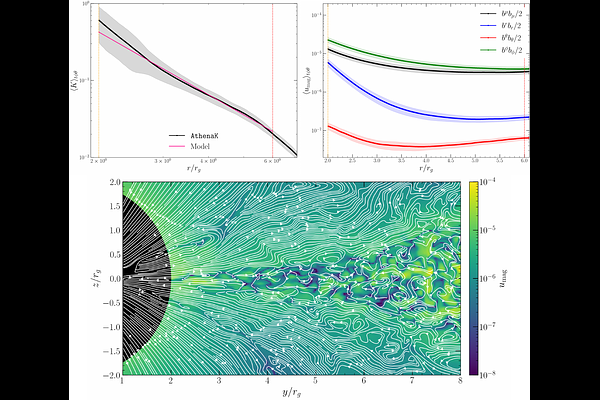The plunging region of a thin accretion disc around a Schwarzschild black hole

The plunging region of a thin accretion disc around a Schwarzschild black hole
Jake Rule, Andrew Mummery, Steven Balbus, James Stone, Lizhong Zhang
AbstractA set of analytic solutions for the plunging region thermodynamics have been developed recently under the assumption that the fluid undergoes a gravity-dominated geodesic plunge into the black hole. We test this model against a dedicated 3D global GRMHD simulation of a thin accretion disc around a Schwarzschild black hole using the code AthenaK. Provided that we account for non-adiabatic heating in the energetics, plausibly from grid-scale magnetic dissipation, we find an excellent agreement between the analytic model and the simulated quantities. These results are particularly important for existing and future electromagnetic black hole spin measurements, many of which do not to include the plunging fluid in their emission modelling. This exclusion typically stems from the assumption of a zero-stress boundary condition at the ISCO, forcing all thermodynamic quantities to vanish. Instead, we find a non-zero $\delta_\mathcal{J}\approx 5.3 \%$ drop in the angular momentum over the plunging region, which is consistent with both prior simulations and observations. We demonstrate that this stress is small enough for the dynamics of the fluid in the plunging region to be well-described by geodesic trajectories, yet large enough to cause measurable dissipation near to the ISCO - keeping thermodynamic quantities from vanishing. In the plunging region, constant $\alpha$-disc models are a physically inappropriate framework.